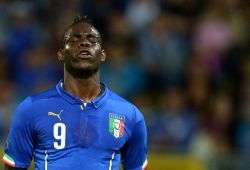Football: Kit suppliers hope to tear strips off rivals in World Cup

As the hosts line up against Croatia in the opening match on Thursday in Sao Paulo it will also signal the kick-off of a fierce brands war which has been gaining momentum in recent years.
The strips worn in the first World Cup in 1930 when players in Uruguay wore simple jerseys and shorts made of natural fibres seem from another world.
It’s now a multi-billion dollar global industry, using the most sophisticated technology and fibres with light-weight compression jerseys aimed at helping players’ muscle recovery.
The 32 kit deals are worth a combined $375 million a year with France having the most lucrative — a $60.5 million a year sponsorship contract with Nike — as England’s deal with the American group is worth an annual $42 million.
Germany have the third-biggest deal with Adidas, ahead of Brazil, reigning world and European champions Spain, Italy, and Russia.
The amount of the sponsorship deal relates to a nation’s ability to sell shirts across the demographic spectrum, with the kit not just a uniform but something that encapsulates style, tradition and national pride.
France coach Didier Deschamps won the World Cup as captain at home in 1998 and admits “the passion” of representing your country is hard to match.
“It’s an enormous pride … it’s history,” said Deschamps.
It’s a lucrative business too.
Once the action gets underway fans will be rushing to wear their teams’ jersey, and the longer they stay in the tournament the better for the brands with an estimated 10 million replica shirts set to be sold for the finalists.
Nike, Adidas and Puma are the three main kit suppliers in Brazil with little known Burrda, Uhlsport, Joma, Marathon and Lotto also present.
Nike have 10 teams, one more than Adidas while Puma have eight including Italy and a quartet of African teams — Algeria, Cameroon, Ghana and Ivory Coast.
Despite the controversy over the high price of the England kit at £90 ($150) Nike football creative director Martin Lotti believes the retail price is not prohibitive.
“Over the years we have always done two kits,” said Lotti.
“We have the on-pitch version which the athletes are wearing which only represents 1 percent of our line (£90 kits) so it gives the fans the chance to wear exactly what the players wear on the pitch if they want to buy it.
“Then the vast majority is actually the £60 ($100) version which will be for mass market.”
But don’t expect the colourful ensembles of the past in Brazil.
FIFA regulations state that each team will have two different and contrasting colours — one predominantly dark and one light for its official and reserve kit — designed to help the referee clarify tackles and deflections.
And while the sports governing body didn’t ask teams to wear one colour some of the suppliers followed the rule closely.
Some kits remain instantly recognisable.
Hosts Brazil have been wearing their iconic yellow and green shirts with blue shorts since losing the 1950 World Cup finals at home. They went on to win their first title in 1958 with the new kit.
Argentina have been wearing white and light blue stripes as their home kit for nearly a century, while England’s white strip has evolved over the past 60 years.
Germany’s kit for Brazil with a descending red chevron echoes the one worn during their success at the 1990 World Cup.
With a dark red design and golden Adidas stripes, the Russian jersey harks to the days of the race for space with ‘Let’s Go’ printed, words used by Yuri Gagarin when he became the first man in space in 1961.
Puma continue their tradition of making striking designs for Cameroon and this year “The Indomitable Lions” have tribal cave painting detailing and a roaring lion badge on their green shirt with yellow trimming.
“The World Cup is a fantastic window,” said Puma’s marketing director Trulsson, as the German group have delayed the start of their advertising campaign until after the tournament.
Puma are counting on their ‘Tricks boot’ — one bright pink the other blue — will become the rage among fans after being worn by stars including Italy’s Mario Balotelli and Spain’s Cesc Fabregas.
Lotti added that the kits have evolved to suit the game.
“Just in fit alone they are a lot more tailored, fitted to the body,” he said.
“It is also about knowing in which climate the kits are being worn. This time around obviously in Brazil there will have a huge range of temperatures to deal with.”
ea/pi

